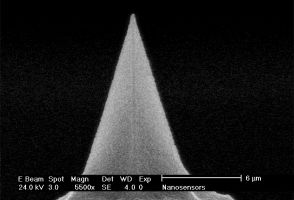W. S. Chae, N. A. Mohd Yusof, K. H. Lee, S. K. Kwan, H. W. Park, J. Z. Jiang, A. Caron
Corrosion effects on the nanotribology of a Ni62Nb38 metallic glass
Applied Surface Science, Volume 573, 30 January 2022, 151628
DOI: ttps://doi.org/10.1016/j.apsusc.2021.151628
Min Cheol Kang, Hai Woong Park and Arnaud Caron
How Good Are the Performances of Graphene and Boron Nitride Against the Wear of Copper?
Materials 2021, 14(5), 1148
DOI: https://doi.org/10.3390/ma14051148
W. Yao, Q. P .Cao, S. Y. Liu, X .D. Wang, H. J .Fecht, A. Caron, D. X. Zhang, J. Z. Jiang
Tailoring nanostructured Ni-Nb metallic glassy thin films by substrate temperature
Acta Materialia, Volume 194, 1 August 2020, Pages 13-26
DOI: https://doi.org/10.1016/j.actamat.2020.04.046
Amir Abdollahi, Neus Domingo, Irene Arias and Gustau Catalan
Converse flexoelectricity yields large piezoresponse force microscopy signals in non-piezoelectric materials
Nature Communications volume 10, Article number: 1266 (2019)
DOI: https://doi.org/10.1038/s41467-019-09266-y
S. K. Kwon, H.D. Kim, X.Q. Pei, H.E. Ko, H.W. Park, R. Bennewitz and A. Caron
Effect of cooling rate on the structure and nanotribology of Ag–Cu nano-eutectic alloys
Journal of Materials Science volume 54, pages 9168–9184 (2019)
DOI: https://doi.org/10.1007/s10853-019-03533-5
H. E. Ko, H.W. Park, J.Z. Jiang, A. Caron
Nanoscopic wear behavior of face centered cubic metals
Acta Materialia, Volume 147, 1 April 2018, Pages 203-212
DOI: https://doi.org/10.1016/j.actamat.2018.01.043
H. E. Ko, S.G. Kwan, H.W. Park and A. Caron
Chemical effects on the sliding friction of Ag and Au(111)
Friction volume 6, pages 84–97 (2018)
DOI: https://doi.org/10.1007/s40544-017-0167-5
https://link.springer.com/content/pdf/10.1007/s40544-017-0167-5.pdf
S. J. Kang, K.T. Rittgen, S.G. Kwan, H.W. Park, R. Bennewitz and A. Caron
Importance of surface oxide for the tribology of a Zr-based metallic glass
Friction volume 5, pages 115–122 (2017)
DOI: https://doi.org/10.1007/s40544-017-0149-7
Arnaud Caron
Quantitative Hardness Measurement by Instrumented AFM-indentation
Jove, J. Vis. Exp. 2016, (117), e54706
DOI: 10.3791/54706
https://www.jove.com/t/54706/quantitative-hardness-measurement-by-instrumented-afm-indentation
Arnaud Caron and Roland Bennewitz
Lower nanometer-scale size limit for the deformation of a metallic glass by shear transformations revealed by quantitative AFM indentation
Beilstein Journal of Nanotechnology 2015, 6, 1721-1732
DOI: http://dx.doi.org/10.3762%2Fbjnano.6.176
Ayako Omura, Megumi Fukuta, Koji Miyake, Takaya Kondo, Masanori Onuma
Dominant factor of contact resistance analyzed by conductive-AFM
2014 IEEE 60th Holm Conference on Electrical Contacts (Holm), 2014, pp. 1-5
DOI: 10.1109/HOLM.2014.7031075
Maneesh Mishra, Philip Egberts, Roland Bennewitz, and Izabela Szlufarska
Friction model for single-asperity elastic-plastic contacts
Physical Review B, 2012 86, 045452
DOI: https://doi.org/10.1103/PhysRevB.86.045452
Kevin R. Moonoosawmy, Hannelore Katzke, Martha Es-Souni, Matthias Dietze, and Mohammed Es-Souni
Mesoporous and Macroporous Brookite Thin Films Having a Large Thermal Stability Range
Langmuir 2012, 28, 16, 6706–6713
DOI: https://doi.org/10.1021/la3006458








